Hybrid City
3036126654 Liu Yuhan
Hong Kong is a hybrid city, and Tong Lau can best interpret its hybridity. The definition of Tong Lau is a specific type of building that is commonly seen in Southeast Asia (Chu, 2012), and it has been used as tenement houses in Hong Kong (Yin, 2010).
Tong Lau can represent a hybrid city in many aspects. I chose the 4 major aspects, and The general narration logic of my film is from the exterior to the interior.
1. Colors
Tong Lau has diverse and saturated colors. The hybrid of colors can be a distinct feature of Tong Lau since most modern apartments prefer low-saturation colors. The Blue House Cluster, which is comprised of blue, yellow and orange buildings, is a renowned and well-preserved Tong Lau building site (The Blue House | Hong Kong Tourism Board, n.d.), and I visited there for my film.
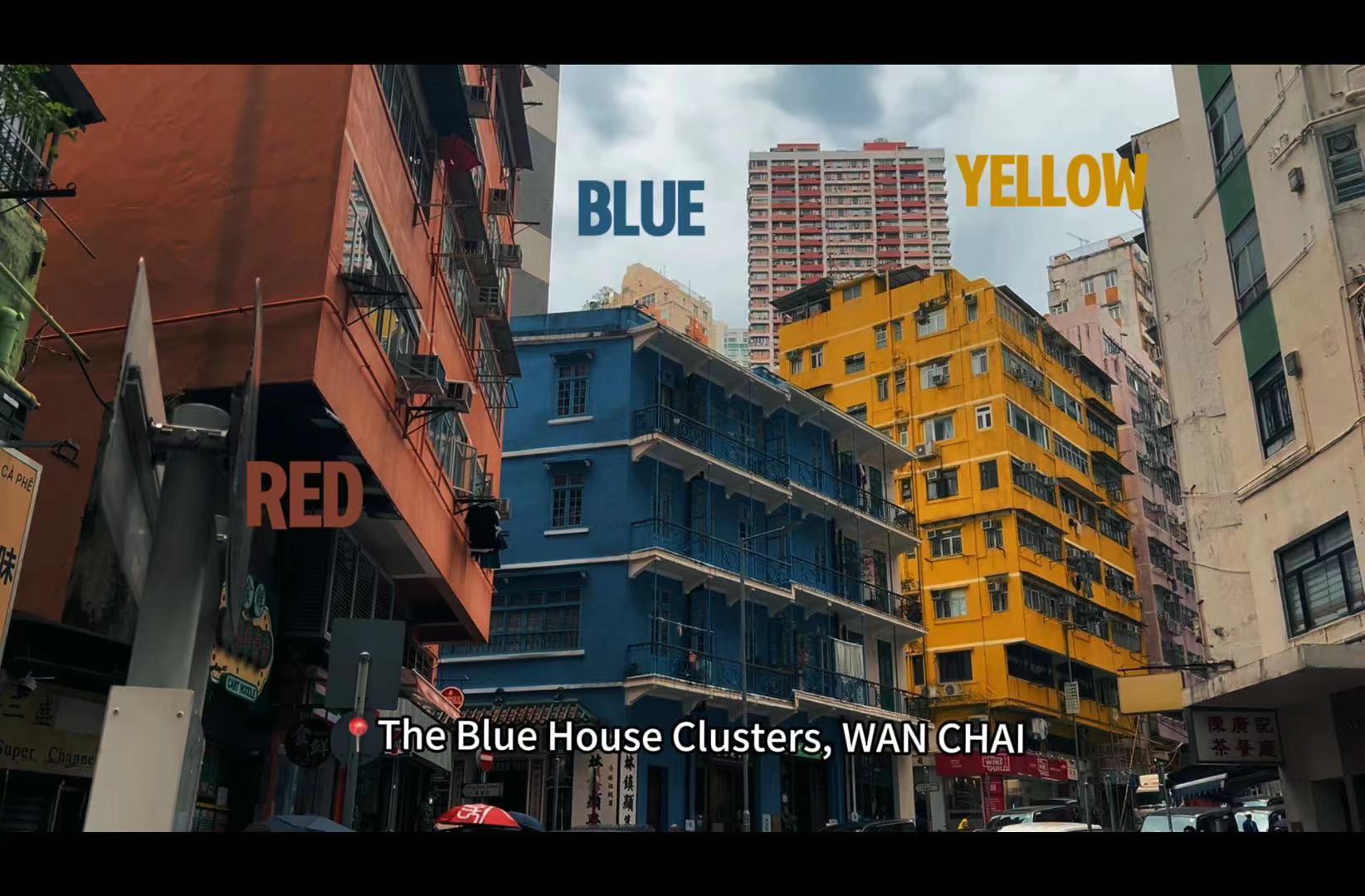
2. Architecture Style
Lam (2021) mentioned that Tong Lau was initially for residential uses, and after the 1930s, the architects began to express the aesthetics of the Tang Lau. Therefore, the architectural style of Tong Lau is a hybrid of Chinese style and Western styles. I chose Lui Seng Chun to embody this topic. Lui Seng Chun is a classic Tong Lau which is now used as a healthcare center (Hong Kong Baptist University School of Chinese Medicine – Lui Seng Chun, n.d.). The art decorations and granite columns are in neo-classical style (Antiquities and Monuments Office – Declared Monuments in Hong Kong – Kowloon (642), n.d.), while Chinese medicine is on display in the hall, which forms a unique hybridity.

3. Lifestyle and Functions
The survey done by Lin (2022) stresses the social value of Tong Lau, as it serves as an oasis for co-living for its residents. There are usually food vendors and shops at the bottom, while the space upstairs is divided into narrow rooms for rental, and all the tenants share common cooking space and restrooms (Lee & DiStefano, 2016). The hybridity of these functions facilitates the daily life of the residents, creating the street culture of Hong Kong.
For privacy concerns, I cannot go to the upper floor of most residential Tong Lau, and it is hard to showcase Tong Lau’s lifestyle via filming the tenants’ homes. Therefore, street markets under Tong Lau are a good approach as they formed a typical lifestyle scene with the advertising signboard stretching out of Tong Lau.
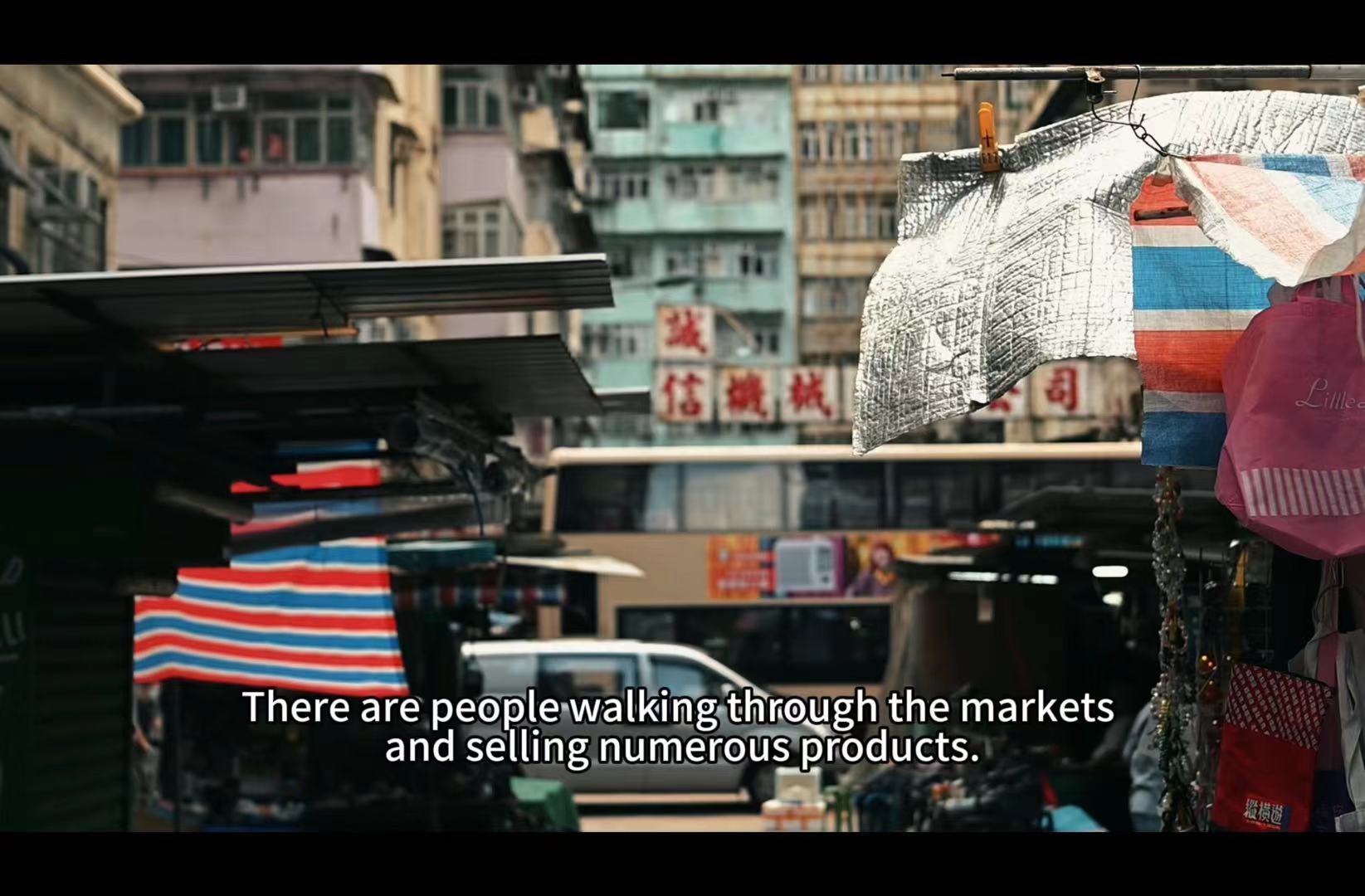
4. Convention and Renovation
While many Tong Lau still act as tenement houses today, some of them have been renovated and turned into renowned tourist attractions. I chose 618 Shanghai Street to express this idea. It is a renovated Tong Lau, where people can consume and rest. However, the Tong Lau across the road is still for traditional tenement use. This contrast represents the inner hybridity.
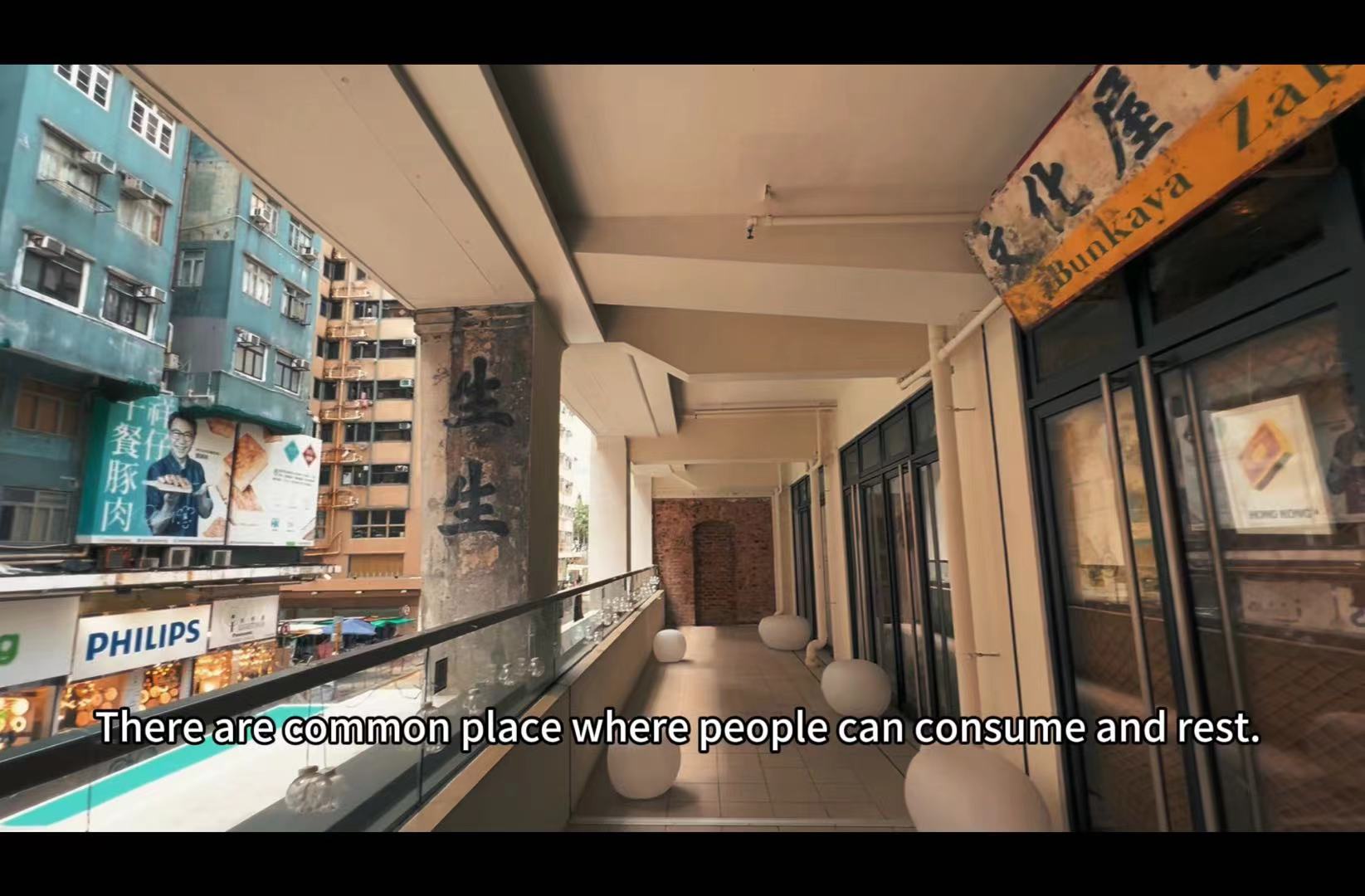
Method and reflections
1. Lens language
a) Different focal lengths
I used different focal lengths in my video.
The long focal lengths are used to shoot some close-ups. One reason is that long focal lengths can take photos of faraway materials, and another reason is that it can create a sense of “compressed space” (Walton, 2023). This is useful when filming the street markets and the windows of Tong Lau, especially when illustrating the density of the buildings or elements.
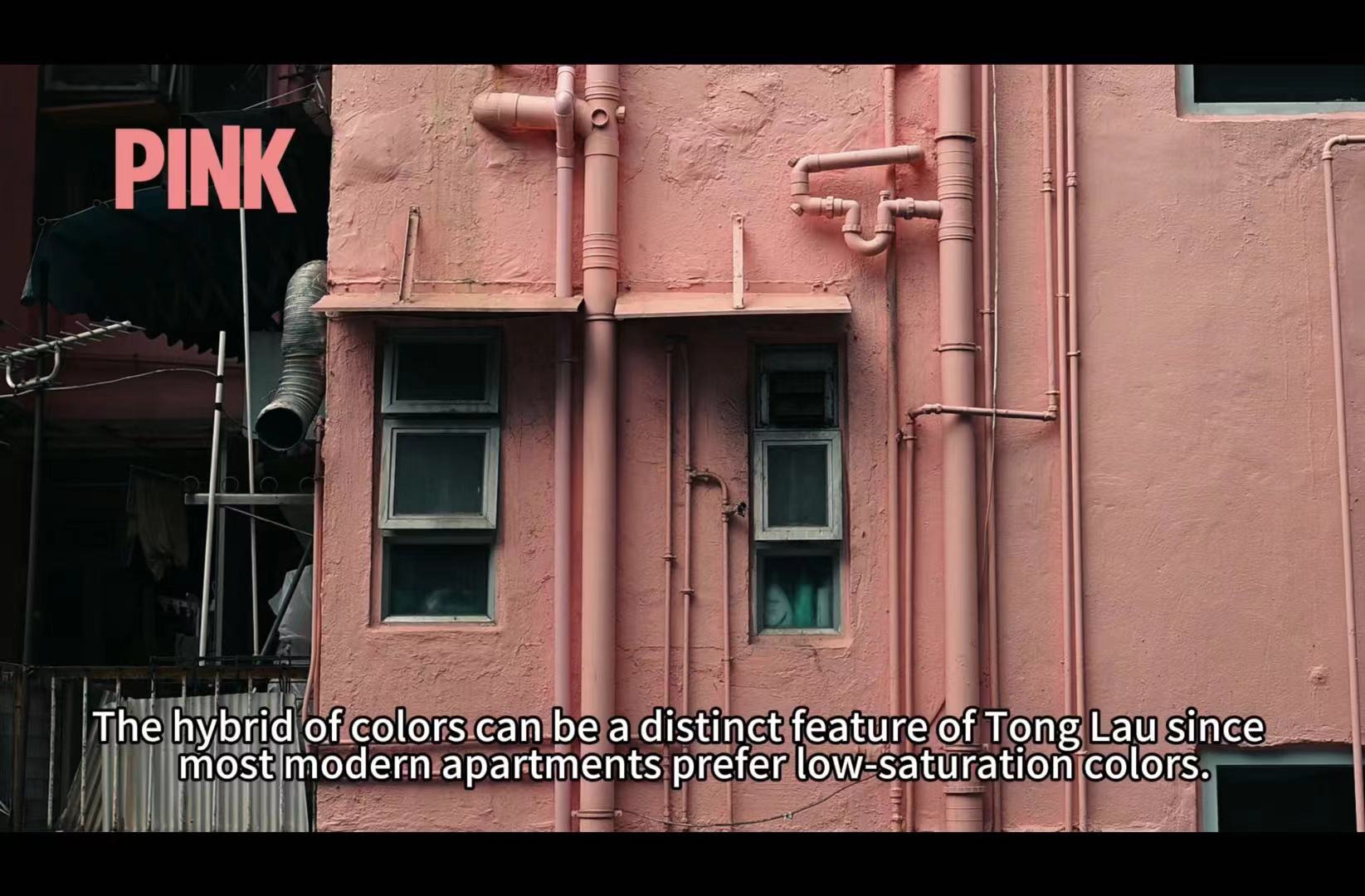
The wide-angle lens can help me to take panorama-like scenes even if I am close to the objects and showcase the strong contrast (Photography Academy, n.d.). Lastly, the middle focal lengths are used to take more common and general things.
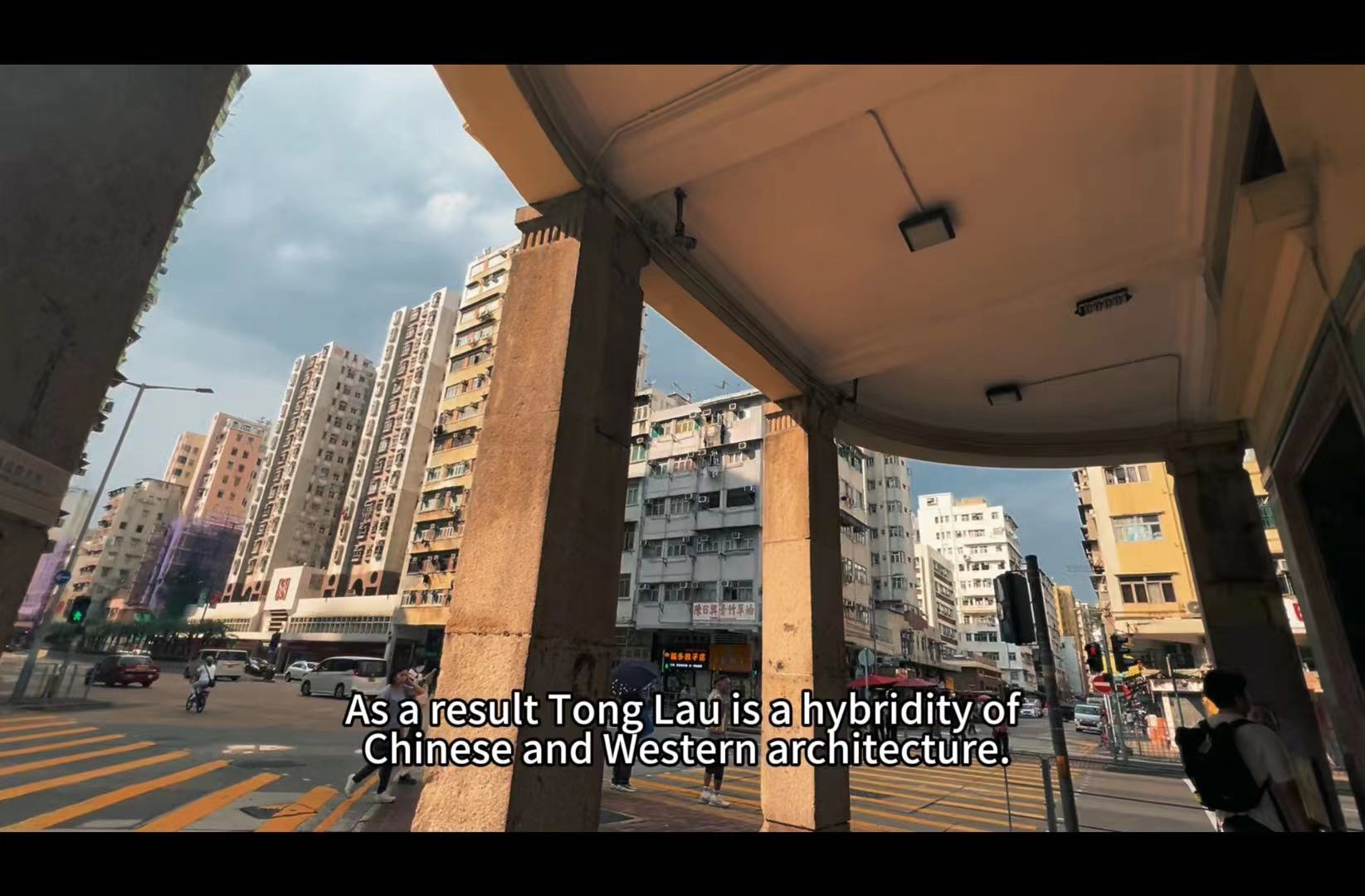
b) Aperture
A large aperture will blur the background, making the subjects stand out more. For instance, I used a large aperture when filming the signboards.
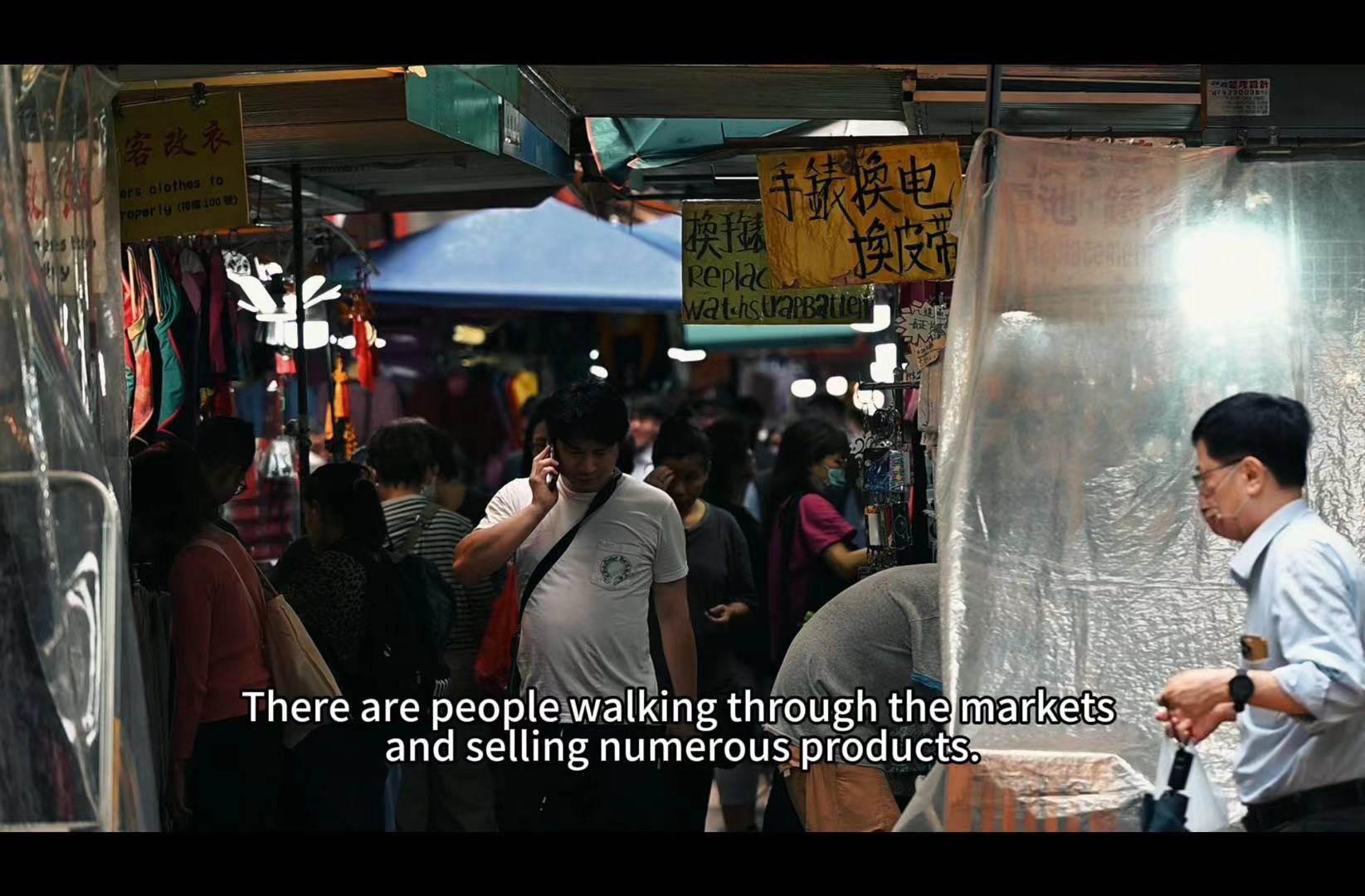
Another use of a large aperture is that it can make the depth of field (where we can see a clear image) narrower. Therefore, when rotating the focusing ring, we can obtain different depths of field, which are like the “slices” of a space. I used this technique at the end of my film. I focused on the Tong Lau across the road first and then focused on the stick figures on the windows of 618 Shanghai Street. Between the illusion and clarity, it unfolds the past and present of the hybrid Tong Lau space.

2. Sound recording
I do not use any background music. Besides copyright issues, I think the natural noises on the street are interesting, and it is a hidden storyline of my film. The sounds of cars passing by, the traffic lights, and the people talking altogether formed the street culture of Hong Kong. Moreover, the sound of traffic lights created a “beat” effect in the film.
3. Research and information collection
I browsed this information online and conducted field verification. I created a document to brainstorm the topics and write my outline and storyline. To facilitate my work, I mapped the places I wanted to visit and ranked them in order. After my visits, I would reexamine my videos and see if there are new insights. In class, I created the mood board and the storyboard for my video essay, and I tried to organize these elements to develop my video.
4. Mobility
Tong Lau is still. However, I tried to add more mobility to it. The cars passing by the street are my approach. I used it at the beginning scene of my film, and the two trams are like a stage curtain to reveal the appearance of Tong Lau.
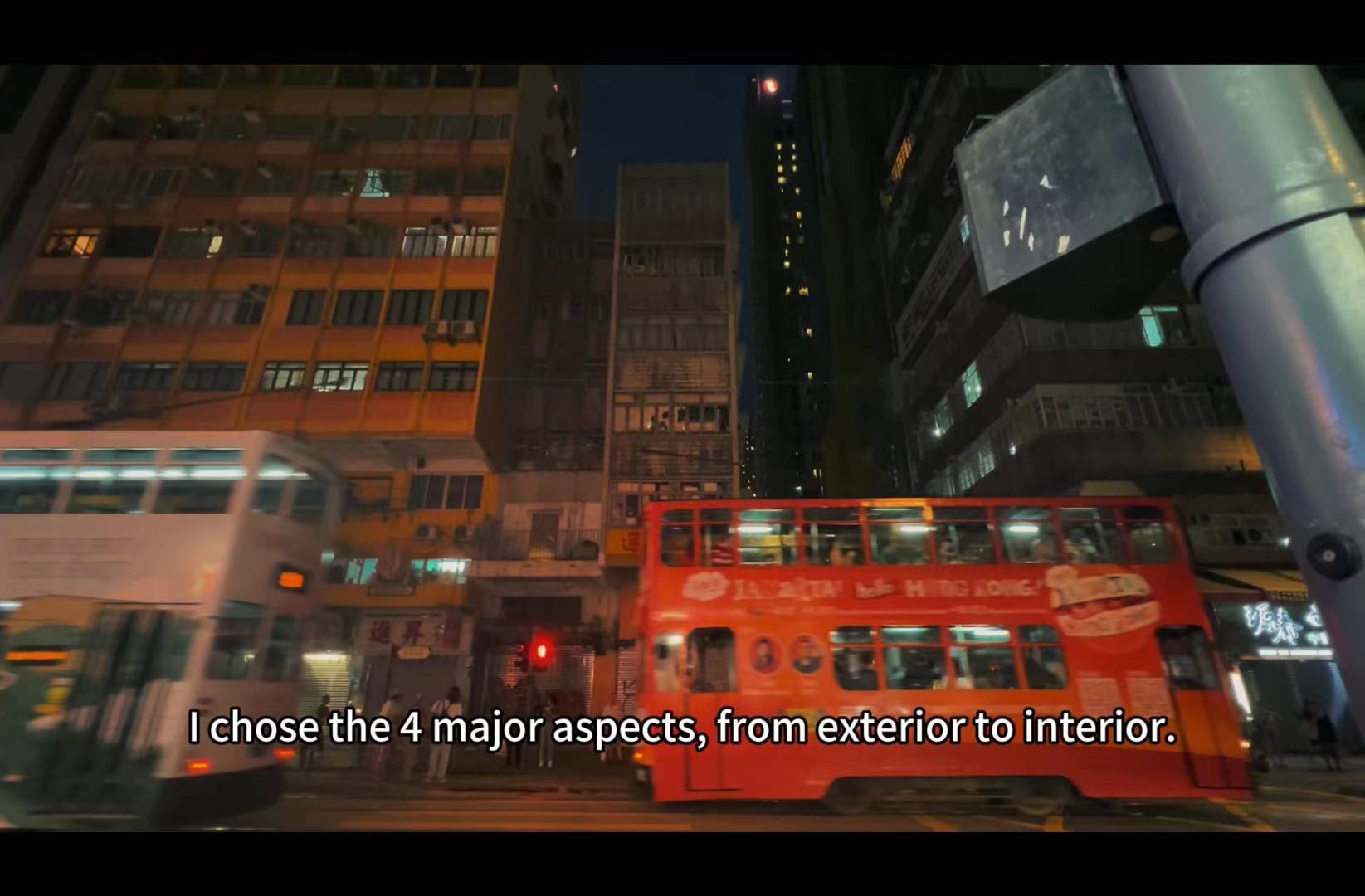
5. Reflections
Before making the film, I had hardly ever been to the Kowloon peninsula. This project provides me with an opportunity to explore Hong Kong. I used to think Central could represent Hong Kong most accurately, where there are skyscrapers, where living pace is fast, and where there is “cyberpunk”. In filming my project, I visited Kowloon several times and was more familiar with the street culture and real tenement life of Hong Kong, where I can buy commodities at fair prices, where there is a vital living atmosphere, where the living pace is slow. This is the hybridity of Hong Kong, and Tong Lau is its carrier. Also, I began to understand the relationship between film, space and architecture. The architecture and its surroundings created different spaces, and the film adds other elements of time, sound, and personal interpret. By “engraving” my work, I was glad to perceive the magic of the combination of these elements and how they illustrate the hybridity of the city.
References
Antiquities and Monuments Office – Declared Monuments in Hong Kong – Kowloon (642). (n.d.). https://www.amo.gov.hk/en/historic-buildings/monuments/kowloon/monuments_131/index.html
Lam, J. (2021, October 6). Hidden Hong Kong: A history of Tong Lau, the colourful tenement building in Hong Kong. Localiiz. https://www.localiiz.com/post/culture-history-tong-lau-tenement-building-hong-kong
Lee, H. Y., & DiStefano, L. (2016, May 9). Tong Lau / 唐樓, the Hong Kong shophouse. Gwulo. https://gwulo.com/tong-lau-Hong-Kong-shophouse
The Blue House | Hong Kong Tourism Board. (n.d.). Discover Hong Kong. https://www.discoverhongkong.com/ca/interactive-map/the-blue-house.html
Lin, E. (2022, September 4). Vanishing tong lau: Hong Kong heritage experts call for action, incentives to save last pre-war shophouses. South China Morning Post. https://www.scmp.com/news/hong-kong/society/article/3191243/vanishing-tong-lau-hong-kong-heritage-experts-call-action
Hong Kong Baptist University School of Chinese Medicine – Lui Seng Chun. (n.d.). https://lsc.hkbu.edu.hk/
Walton, S. (2023, February 22). What is Lens Compression in Photography? Guide for Beginners. Online Photography Courses From iPhotography. https://www.iphotography.com/blog/what-is-lens-compression-in-photography/#:~:text=Lens%20compression%20is%20the%20idea,it%20larger%20in%20the%20frame.
Photography Academy. (n.d.). https://www.photographyacademy.com/when-to-use-a-wide-angle-lens
Yin, L. H. (2010). Pre-war Tong Lau: A Hong Kong Shophouse Typology. Resource Paper for the Hong Kong Antiquities and Monuments Office, Hong Kong Development Bureau. Commissioner for Heritage’s Office, 19, 1-17.
Chu, C. L. (2012). Between typologies and representation: the tong lau and the discourse of the “Chinese house” in colonial Hong Kong. Colonial frames, nationalist histories: imperial legacies, architecture, and modernity.
3036126654 Liu Yuhan
I really like your angle in discussing the hybridity of Hong Kong, and your article has given me a more comprehensive view of the art of color and architectural style of these old buildings.
I really like the shot of the Blue House part of your video, the jumping colors are a great contrast to the older exterior of the house. I’ve had the pleasure of watching the Blue House hold neighborhood group photos and get-togethers, and it’s a great atmosphere, a great contrast to the commercialism of the surrounding Wan Chai area.
I think you did a really good job! According to the theme of hybrid city, you divided the characteristics into four categories, which is clear and representative. The part of hybrid color is impressive. The distinct contrast between colors makes the visual design impact. Meanwhile, you also have a good command of lens language. In the shooting about 618 Shanghai Street, the way to capture the opposite building through the reflection of the mirrored glass is very clever, and the transformation of the scene is also very smooth and natural. The whole video provide a good research on hybrid city.
Zhao Yuxuan 3036127050
Hi! I really enjoyed your video! In the introduction of the hybrid city it was clearly divided into four parts very clear and intuitive to the audience. I especially like the tones and white noise of this video, it gives a very healing feeling, especially the first color part, very interesting and creative subject matter, with highly saturated clashing colors creating a huge visual impact. The pacing of the video is steady, the length of each section is controlled just right, and the slow camera movement enhances the calming feel of the video. The focusing of the camera at 02:30 is very interesting and enhances the visual guidance and presentation of the entire video.
Hou Jianing 3036268139
Hi! I think you have made a very interesting and meaningful video! Your exploration of Hong Kong’s hybridity is engaging and Tong Lau is an exceptionally good starting point for investigation. Your detailed breakdown into four distinct characteristics made the theme both clear and representative. The segment on hybrid color was particularly striking, with the contrast between colors creating a powerful visual impact. In particular, I was impressed by the section featuring the Lui Sheng Chun where contrast between the Chinese and Western architectural style is well demonstrated, e.g.
wooden frames and granite cloumns.
Overall, I think your video was well-researched and was a visually stunning representation of the hybrid city theme. The narration is easy to follow but at the same time informative. Thank you for your video!
Chau Leo Li-Heng 3036238598
This article explores the concept of Tong Lau in Hong Kong and how it represents the hybridity of the city. I really like how clear the structure is, the author highlights four major aspects: colors, architecture style, lifestyle and functions, and convention and renovation. Through the use of examples such as the Blue House Cluster, Lui Seng Chun, street markets, and 618 Shanghai Street, the author effectively showcases how Tong Lau embodies the hybridity of Hong Kong. The article provides a fascinating insight into the cultural and social value of Tong Lau, and how it has become an integral part of the city’s street culture. Overall, this article is a great read for anyone interested in the unique architecture and lifestyle of Hong Kong.
I really like your text organization and visual design. The content is divided into four parts, following the logic from outside to inside, which made me feel very organized while watching. In terms of visual design, I think your video captures the retro feel of a Tong Lau and presents the environment around specific Tong Lau. This perspective of standing at one point and taking pictures of the surrounding environment is very interesting to me. Finally, I like your photography of the interior of Tong Lau, which is very immersive.
Liu Chang
3035952197